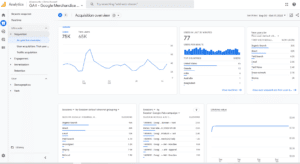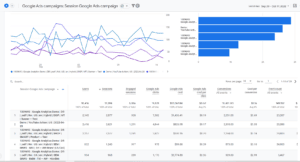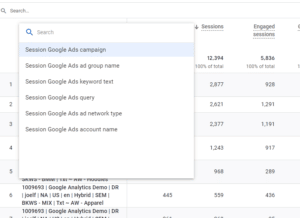Last Updated on October 25, 2022 by Joe
It’s no longer coming, it’s no longer in the future. It’s here. The dreaded transition to Google Analytics 4 is upon us. While the official transition date is July of 2023, you need to get GA4 installed and tracking now. Then, once it is collecting data, don’t just let it sit on the shelf. It’s big, it’s bad, it’s complex. Start learning it now.
As a part of that, it is critical to make sure your Google Ads/Display and YouTube campaigns are linked to your GA4 account. Doing this will allow you to begin to learn how to navigate the new landscape of web analytics and attempt to determine the effectiveness of our campaigns. If you still haven’t gotten GA working yet (drop everything, stop reading this and do it) or it is only starting to collect early data, OR you aren’t running campaigns at this time, a good place to start is to use the Google Analytics demo accounts. Go here to access the demo accounts.
Step 1 – Where did everything go?
All of the naming conventions and labels have changed in the new GA. To track down Google Ads data, go to>Reports>Acquisition>Acquistion Overview. Then on your top cards, you will see Sessions by Google Ads campaigns.

Next, Click on the View Google Ads Campaign link at the bottom of the card and this will take you to an expanded view of your campaigns.

Now, remember – EVERYTHING HAS CHANGED.
So a typical routine client check for me would be to analyze both campaign performance in Google Ads, but then go into Analytics to see truly how the campaign was performing. I wanted to know pages/session, bounce rate and average session duration. Those metrics are no longer. Now, I have to measure performance differently – Engaged Sessions, defined as sessions that lasted longer than 10 seconds, or a conversion event occurred, or 2 or more page or screen views – is now a metric I need to pay attention to. Engaged Sessions is going show you the percentage of quality visitors your drove through with your campaigns, in addition to the conversion and cost per conversion data.
Remember when with Google Ads search campaigns in Google Analytics we could just click on the campaign, and it would isolate down and get us into the ad group and then the keywords within the ad group. No longer. We now must use a drop-down, which gives us the option of campaign, ad group name (at an aggregate level) keyword text, query, ad network type, and account name. This is a bit tricky to find, it is the smaller arrow next to the plus sign on the upper left-hand side.

Having organized naming conventions with your ad groups that are tied to your campaigns are important.
So, this is just a start. I will be digging more into this, as there are several layers and views that can be used to now break down your Google Ads data. Bottom line, it is harder, but we have no other choice than to learn to use and interpret it.

Leave a Reply